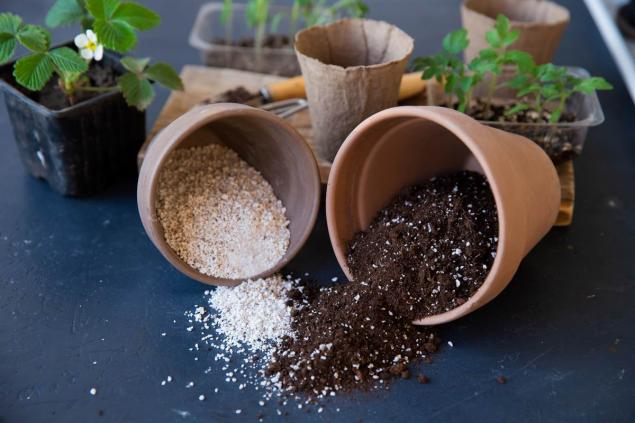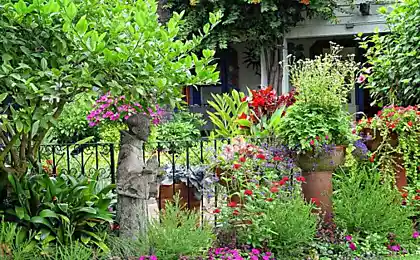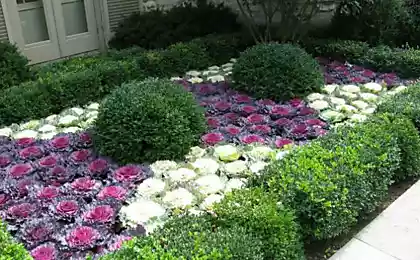142
Papin method of removing mold and white plaque in flower pots
White plaque on the ground in flower pots can appear for a number of reasons. But in any case, this is a signal that the plant is not taken care of correctly.

To understand what exactly we are doing wrong, try to understand the causes of white plaque in more detail.
Hard tap water, with which we water flowers, contains chlorine and a large amount of calcium and magnesium salts. The same salts that settle on plumbing, forming lime plaque, can lead to the formation of white plaque on the surface of the soil when water evaporates.

It would not be so sad if the problem was purely aesthetic. But hard water changes the very structure of the soil. The acidity of the soil shifts towards alkalization, and this disrupts the absorption of vital elements by plants, including phosphorus.
White plaque on the ground can be an indicator that plants are overfed with fertilizers. You may need to change the dosage, composition of fertilizers or apply them less often.
Heavy soil and lack of drainage lead to the fact that most of the water evaporates from the surface of the soil, forming the ugly coating, which we are talking about.

Another reason is too much soil for a small plant. In this situation, it does not have time to absorb moisture, the water stagnates. And this leads to the formation of foci of decay on the roots.
Mold on the soil surface is also formed from excessive watering in conditions of insufficient light. Basically, mixtures based on peat and compost are subject to this.

What to do to soften and acidify water
To avoid moisture stagnation
To get rid of the mold on the ground
Observing the watering regime necessary for indoor plants, as well as providing them with an effective drainage system, you will achieve their friendly flowering and protect them from the appearance of an ugly white coating on the soil.

To understand what exactly we are doing wrong, try to understand the causes of white plaque in more detail.
Hard tap water, with which we water flowers, contains chlorine and a large amount of calcium and magnesium salts. The same salts that settle on plumbing, forming lime plaque, can lead to the formation of white plaque on the surface of the soil when water evaporates.

It would not be so sad if the problem was purely aesthetic. But hard water changes the very structure of the soil. The acidity of the soil shifts towards alkalization, and this disrupts the absorption of vital elements by plants, including phosphorus.
White plaque on the ground can be an indicator that plants are overfed with fertilizers. You may need to change the dosage, composition of fertilizers or apply them less often.
Heavy soil and lack of drainage lead to the fact that most of the water evaporates from the surface of the soil, forming the ugly coating, which we are talking about.

Another reason is too much soil for a small plant. In this situation, it does not have time to absorb moisture, the water stagnates. And this leads to the formation of foci of decay on the roots.
Mold on the soil surface is also formed from excessive watering in conditions of insufficient light. Basically, mixtures based on peat and compost are subject to this.

What to do to soften and acidify water
- Water the plants with rain or melt water from the refrigerator.

- Use the water purified in the filter.
- Add 0.1 g of oxalic or 0.3-0.4 g of citric acid to a liter of water.
- Stir in a liter of water 3 g of wood ash or a few drops of lemon juice.
- Do not forget that the water temperature for irrigation should be slightly higher than room temperature. Cold water can harm plants. For example, lead to rotting of the roots.
To avoid moisture stagnation
- Use only pots with a hole in the bottom.
- The first layer mound in a pot for flowers ceramzite or small pebbles. Good drainage will quickly remove excess moisture from the soil.

- Cover the soil with a layer of mulch, for example, agroperlite.
To get rid of the mold on the ground
- If mold has already appeared, a radical approach is needed. It is best to completely change the ground or at least its upper part. The pot should be thoroughly washed with a solution of citric acid.

- To prevent the appearance of mold, water the soil once a month with a weak solution of permanganate. You can also sprinkle it with crushed activated charcoal.
- From now on, water the plant only after drying the upper layer of the earth in the pot.
Observing the watering regime necessary for indoor plants, as well as providing them with an effective drainage system, you will achieve their friendly flowering and protect them from the appearance of an ugly white coating on the soil.
The salad that tomorrow morning will want to repeat in triple size
Recipe of cakes without yeast, which will ask even the mother that all his life bakes and fries tirelessly























